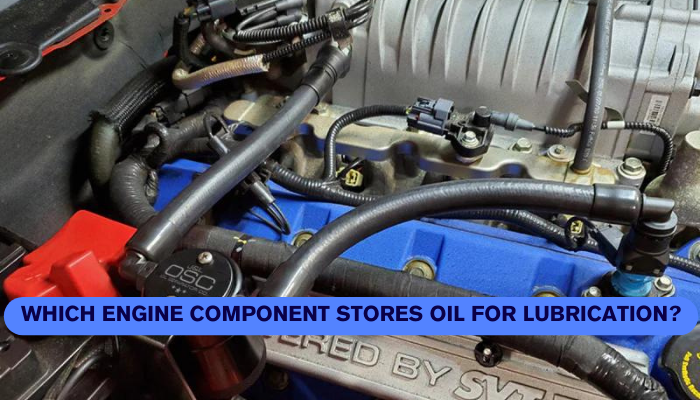
PedalMonster, Throttle Sensitivity Booster, Standalone for many Cadillac, Chevy/GMC, Chrysler, Dodge/Ram, Ford, Jeep, Lincoln, Mazda
$295

PedalMonster, Throttle Sensitivity Booster, Standalone for many Cadillac, Chevy/GMC, Chrysler, Dodge/Ram, Ford, Jeep, Lincoln, Mazda
$295

2869-3T (3-3.5 Turns) 1994-2001 Dodge 1500 or 1994-2002 Dodge 2500-3500 Pickup Trucks Steering Gear
$386

2757 (4 Turns) 1980-1997 Ford Bronco, Explorer, Van, F-Series Pickup Truck, Ranger or Mazda Steering Gear
$296

2864S-LM-3T (3 Turns) 1997-2000 Cadillac Escalade, Chevrolet or GMC Pickup Trucks, Suburban's, Tahoe's or Yukon's Steering Gear
$316

2869-4T (4-4.5 Turns) 1994-2001 Dodge 1500 or 1994-2002 Dodge 2500-3500 Pickup Trucks Steering Gear
$506

FASS TSF17180F140G Titanium Signature Series Diesel Fuel System 180F 140GPH@55PSI Ford Powerstroke 6.7L 2011-2016
$691.55

FASS TSF14180F140G Titanium Signature Series Diesel Fuel System 180F 140GPH@45-50PSI Ford Powerstroke 7.3L and 6.0L 1999-2007
$691.55

Firestone Universal Air Compressor Mounting Bracket (For PN 2097 / 2158 / 2178 / 2219) (WR17602497)
$77.44

Firestone Sport-Rite Air Helper Spring Kit Rear 99-05 Chevy 1500 No HD/97-04 Ford F-150 (W217602320)
$538.89

Heavy Duty MAXXLinks Heavy Duty Sway Bar End Links Extended for 06-18 Ram 4x4 1500 W/ Leveling Kit SuspensionMaxx
$169.99

MAXXstak 1.5 inch/2 inch/2.25 inch/2.5 Inch Leveling Kit for 15-18 GM Half Ton Trucks and SUV's equipped W/ Manetic Ride SuspensionMaxx
$169.95

MAXX Cam 7: 1 inch-2.5 Inch Leveling Kit for 17-20 Silverado/Sierra 2500HD/3500HD SuspensionMaxx
$370.98

Carrier Bearing Lowering Kit 2 Inch Drop 05-16 Ford F-350 Super Duty 05-16 Ford F-250 Super Duty Skyjacker
$76.20

Carrier Bearing Lowering Kit 2.25 Inch Drop 80-99 Ford F-250 80-97 Ford F-350 99-08 Ford F-250 Super Duty 99-08 Ford F-350 Super Duty Skyjacker
$68.23

Carrier Bearing Lowering Kit 1 Inch Drop 80-99 Ford F-250 80- 97 Ford F-350 97 Ford F-250 HD 99-08 Ford F-250 Super Duty 99-08 Ford F-350 Super Duty Skyjacker
$50.45

Cherokee Transfer Case Lowering Kit 94-01 Jeep Cherokee Lowering Height 3 Inch 94-01 Jeep Cherokee Skyjacker
$65.10

Which Engine Component Stores Oil for Lubrication?
Only some components in automobile engineering are as essential to an engine's seamless running as adequate lubrication. To maintain lifespan and efficiency, the complex dance of moving parts within an engine requires a well-planned symphony of oil. But which engine component stores oil for lubrication?
To comprehend the parts of an engine that store oil and the vital regions it lubricates, Midwest Aftermarket looks at its internal workings so you can know which engine component stores oil for lubrication.
The Oil Reservoir: The Starting Point for Lubrication
Every engine has a part made expressly to distribute and store oil for lubricating reasons. The oil pan is the name of this essential component.
The oil pan is located at the base of the engine block. It functions as a reservoir. It holds a substantial amount of oil that the engine can use while running.
The Oil Pan's Functionality
The primary purpose of the oil pan is to hold oil and to make it easier for the engine to circulate it. This reservoir lowers friction, and delays early wear and tear by keeping enough oil on hand to lubricate essential engine parts.
Examining the Lubrication Path
Oil travels through the engine to reach different parts and supply vital lubrication after being stored in the oil pan. The following are the significant components that depend on oil to function correctly:
Crankshaft and Bearings
A thin layer of oil helps the crankshaft by reducing friction between its journals and bearings. It is a critical component that transforms reciprocating motion into rotating motion.
Overheating and mechanical failure might result from excessive friction with inadequate lubrication.
Cylinders and Piston Rings
The seal that piston rings provide between the engine's cylinder walls reduces gas blow-by and makes effective combustion possible. Oil lubricates the interface between the cylinder walls and the piston rings to ensure smooth operation and avoid metal-to-metal contact.
Camshaft and Valve Train
The camshaft manages the engine's intake and exhaust valves, opening and shutting them to control the flow of gasoline and air. Oil lubricates the valve stems and guides, camshaft lobes and followers, and valve train components, enabling accurate and seamless valve action.
Timing Chain or Belt
Oil lubricates timing chains or belts in engines to ensure appropriate tension and alignment. In the unlikely case of a failure, this averts catastrophic damage and guarantees precise timing of engine operations.
Buy Aftermarket truck parts here.
The Importance of Adequate Lubrication
An engine's lifetime and performance depend on adequate lubrication, which goes beyond simple convenience. Insufficient oil can result in:
- Excessive heat buildup from friction between moving parts
- Worn out components
- Limited performance
- Engine failure
Maintaining an engine's health requires routine maintenance, including changing the oil at the required intervals. Ignoring this little yet important duty can have expensive effects, as even the strongest engines require the right oil to run at their best.
Buy Truck Accessories here.
The Bottom Line
Learning which engine component stores oil for lubrication is vital. Oil has a dual role in the complicated movements between an engine's interior parts. It protects and facilitates smooth functioning and extended engine life. All the parts are essential to ensuring that the lubrication is done correctly. Appreciate the subtleties of your car's engine and take preventative action to ensure it continues functioning smoothly for many years. Stay aware of the parts that store and distribute oil and the locations where it lubricates.
- Choosing a selection results in a full page refresh.

Free Shipping
Any amount. All the time. Did we mention its fast too?

Give Us A Call
217-212-5199

Price Match
We will price match any legitimate competitor.

Easy Returns
Changed your mind? Don't install it! We will take it back no problem.

















































































































































































































